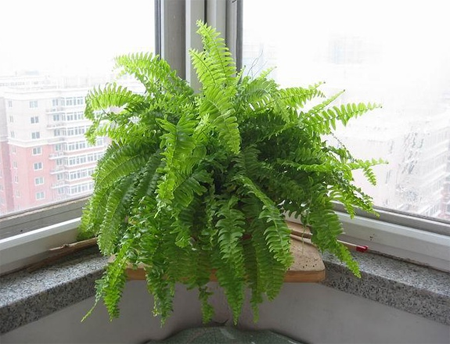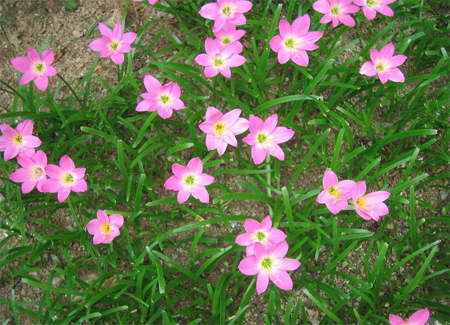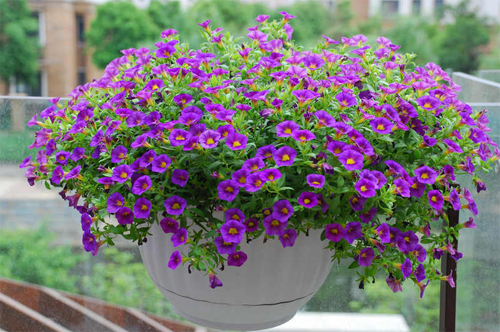Can the culture methods and matters needing attention of Boston fern be cultured in water?
Boston fern is very hardy, but prefer humid environment, it is easier to raise, what are the breeding methods and points for attention of Boston fern? Can Boston ferns be hydroponically cultured?

Culture methods and points for attention of Boston fern:
Generally placed in the indoor bright scattered light training, can not be exposed to direct light, but also can not be cultured in the dark. The suitable temperature for growth is 15-25 ℃, and it can survive the winter safely when it is above 10 ℃ in winter.
Although drought-resistant, but still need sufficient water, and should not be too wet or too dry, to keep the basin soil often moist. In summer, water is watered once or twice a day, often spraying water to the leaves. Do not need much fertilizer, the growth period every 4 weeks to apply thin rotten cooked cake fertilizer, should not use quick-acting chemical fertilizer, fertilization must not stain the leaves, so as to avoid damage.
The mixed culture soil of rotten leaf soil, river sand and garden soil was selected in pot culture, and the growth was better when water moss was used as culture medium. Change the basin every other year in the spring.
Watering and fertilization conservation:
The outdoor cultivation of Boston fern can be mixed with about half (volume ratio) of expanded plastic artificial soil in ordinary culture soil, and mix well. Indoor potted plants can completely use light, clean and hygienic pure expanded plastic artificial soil.
The Boston fern should be cultivated in a shade with a shade curtain on it. It is better to cover another layer of colorless film, which is not only rainproof, but also protected from direct sunlight. During the growing period, water should be watered once a day, and drip irrigation should be applied to prevent the leaves from becoming withered and rotten.
Hot summer can also spray water around potted flowers to increase humidity.
In winter, moisture should be properly controlled and kept moist. Nitrogen fertilizer should be applied during the growing period. For outdoor cultivation, thin organic fertilizer and water can be applied twice a month to avoid polluting the leaves.
Indoor cultivation, Zuoji can supplement nitrogen-based nutrient solution every 2 months. In order to ensure the beautiful shape of the plant and promote air circulation, the withered and yellow old leaves should be cut off combined with plastic surgery.
Boston ferns like bright scattered light and can never accept direct sunlight. Watering is based on the principle of keeping moist. It can be watered once every 1-2 days in summer, and then watered in autumn and winter when the soil is semi-dry.
If the plant withered due to lack of water, the whole basin can be soaked in the water to return to spring, and the leaves will be sprayed more. If it is not erect after soaking for 24 hours, you might as well cut off all the leaves to promote the growth of new leaves. I like a warm climate. The suitable temperature for growth is 18 ~ 24 ℃, and the growth is poor when the temperature is lower than 5 ℃.
The root system of pteridophytes is weak and extremely sensitive, so the concentration of fertilization should not be too high and the application of quick-acting chemical fertilizer should not be too much.
Ferns also like fertile and water-conserving soil, so the best way is to add rotten barnyard manure when filling the basin, and it is appropriate to apply diluted rotten cake fertilizer during growth, but be careful not to stain the leaves so as not to damage the leaves. Clean the contaminated leaves with clean water after application.
Boston fern breeding method:
The reproduction of Boston fern can be carried out when the basin is turned from April to May in early spring. First, buckle the plant upside down out of the flowerpot, shake off the old soil, and then cut the plant into several clumps and plant them separately. The separately planted plants are placed in the shade and slow down for about a week, and then they can be transferred to normal maintenance.
Note:
Because the roots of Boston ferns are very dense, it is best to water them by soaking (about 10 minutes at a time) so that their roots can fully absorb water.
Can Boston ferns be hydroponically cultured?
This can be carried out in hydroponics. Boston ferns like humid environments very much. Even hydroponics must have sunshine, otherwise they will have yellow leaves.
What if the leaves of Boston fern are dry? attention should be paid to watering during the growing season.
Boston fern is an excellent indoor potted plant, but in the process of breeding, the leaves of Boston fern may dry up due to improper maintenance and other reasons, which seriously affect the ornamental value of Boston fern. What about Boston fern leaves when they are dry? how to prevent Boston fern leaves from drying up? Let's study with the editor.
First, what if the Boston fern leaves are dry?
The reason why Boston fern leaves are dry may be due to too much light, too little watering and too much watering. If you want to solve the problem of Boston fern leaves drying, you must prescribe the right medicine to the case.
What to do when the leaves of Boston fern are dry: the light is too strong
Boston ferns prefer semi-shade environment, avoid direct sunlight, too much light will cause rapid evaporation of water in Boston fern leaves, and cause Boston fern leaves to dry. Generally put the Boston fern indoors out of sunlight, sufficient astigmatism is the most suitable, but the growing season should also maintain a certain amount of sunlight for the growth of Boston fern.
What to do when the leaves of Boston fern are dry: too little watering
Boston ferns like warm and humid environments most, including the soil where Boston ferns are planted and the air around them. The main reason why Boston fern leaves are dry is often due to insufficient humidity. Pay attention to watering Boston ferns to keep the soil moist, and often spray water on the leaves of Boston ferns to improve air humidity.
What to do when the Boston fern leaves are dry: overwatering
Boston fern is a plant that likes high humidity very much, but if it is overwatered, it will cause the soil of Boston fern basin to accumulate water, thus causing the leaves of Boston fern to dry up. First of all, the water must be controlled, and then it depends on whether the Boston fern basin soil can be breathable and permeable. If not, it is suggested that consideration be given to changing the soil for the Boston fern, or changing it to hydroponics. Boston fern should be maintained in accordance with the principle of less watering and more spraying. Dry places in the north can consider putting water on a plate under the basin to achieve the purpose of increasing air humidity.
Second, how to prevent Boston fern leaves from drying up?
Boston ferns like warm, humid and semi-shady environments, like bright scattered light, and are afraid of direct sunlight. Summer can be properly shaded, long-term direct light will cause most of the leaves of Boston fern to be withered and yellow. Boston ferns should be kept indoors in bright light and can grow normally even if they are kept for a year. Because of the calcium-loving habit of Boston fern, the basin soil should add appropriate amount of lime and chopped eggshell, and the effect of calcareous fertilizer will be better. In winter, we should reduce watering and stop fertilizing.
Boston ferns like the humid environment, the growing season should be fully watered, in addition to keeping the basin soil moist, but also pay attention to higher air humidity, when the air is dry, sprinkle water around Boston ferns. Especially in summer, Boston ferns are watered 1-2 times a day. If there is a lack of water, the leaves of Boston ferns will dry up. Boston fern watering avoid basin soil when dry and sometimes wet, easy to make Boston fern leaves yellow. Boston fern is applied 2-3 times a month dilute liquid fertilizer, fertilization should not stain the leaves of Boston fern, so as not to cause rotten leaves.
After reading the relevant information about what to do when the Boston fern leaves are dry, you now know the solution to the Boston fern leaves drying. Share it with your friends!
There are many species of cultivated ferns that can breed indoor ornamental ferns only by cutting a stem, such as the common bird's nest fern, kidney fern and Boston fern. Let's take a look at the breeding methods of kidney fern and Boston fern. Kidney ferns can also reproduce with spores. Boston ferns can only use ramets and stalks to reproduce together.
I. introduction of split-plant propagation
Method 1: directly take the new root ball growing in the periphery of the root to propagate.
Method 2: use a sharp knife to cut the larger root ball to propagate.
Second, the choice of soil for raising seedlings:
Peat soil or general culture soil is recommended for soil propagation.
It is recommended to use cutting or seedling sponges for hydroponic propagation.
Third, how to propagate with a stem
Let the Boston kidney fern walk its stem and cut it off (ramet) before planting it when a new plant (seedling) grows.
How can we grow small branches quickly?
In normal maintenance, the medium should be kept in a slightly wet state, the higher humidity conditions needed by Boston ferns should be maintained, and direct sunlight should be avoided during breeding.
If the air humidity is high, there will be no problem even if the soil is slightly dry, lateral buds can only grow when the humidity is high, and the roots will be healthy only if they have a chance to breathe, so air humidity is also an important key.
As for watering is actually very simple, lift the edge of the basin blade slightly with a sharp mouth kettle to pour water, or put it in a shallow water plate for about half an hour to let it capillarity up to absorb water, usually pad wide water plate to provide air humidity, but do not soak the basin bottom.
Why do the leaves turn yellow?
The leaves are dry brown or brittle (so-called browning), usually because the air is too dry with too much salt.
Avoid leaves near heat sources or power sockets, as drastic changes in temperature around Boston kidney fern plants can also cause browning.
If the leaves yellowing or withering (non-browning) is usually caused by overwatering, you should immediately stop watering less, cut off the damaged leaves, and check the roots of the plants to see if they have rotted. If the roots of the plants are mostly black, you should throw away the whole plant.
Pteridophytes are tropical plants, normal temperature water should be used when watering, and low water temperature should be avoided in winter.
Fifth, pest control of ferns:
1. Scale insects
Shell insects are one of the most common diseases and insect pests of Boston kidney fern. They look like small brown CDs and are easy to be found in compound leaves. When found, they should be scraped off with their fingernails or removed with similar texture tools.
2. Red spider
Red spiders are not common, but they are more harmful to Boston fern plants than shell worms. If the presence of spider silk between compound leaves is evidence of damage by red spiders, the affected compound leaves should be cut off when found.
If the weather is warm enough, red spiders can be washed off with warm water slightly higher than room temperature. Regular spray can not only help Boston ferns moisturize, but also prevent dry red spiders from invading.
Insecticides should be avoided in dealing with diseases and insect pests of Boston ferns, as ferns are vulnerable to chemicals.
- Prev

The propagation method of Chinese chive orchid and the difference between flowering stage and onion orchid
Leek orchid is very good-looking, vitality is also very tenacious, whether in dry places or relatively humid places are able to grow, what is the breeding method of leek orchid? When will it blossom? what's the difference between it and green onion orchid?
- Next

Planting methods and matters needing attention of millions of small bolls the best month to blossom
Million small bell is very good-looking, grow a lot, flowering is very good-looking, will open a lot of florets, and trumpet flowers are a bit like, millions of small bell planting and points for attention what are there? When is it better to blossom? Planting methods and points for attention of millions of small bolls: potted soil and watering
Related
- Fuxing push coffee new agricultural production and marketing class: lack of small-scale processing plants
- Jujube rice field leisure farm deep ploughing Yilan for five years to create a space for organic food and play
- Nongyu Farm-A trial of organic papaya for brave women with advanced technology
- Four points for attention in the prevention and control of diseases and insect pests of edible fungi
- How to add nutrient solution to Edible Fungi
- Is there any good way to control edible fungus mites?
- Open Inoculation Technology of Edible Fungi
- Is there any clever way to use fertilizer for edible fungus in winter?
- What agents are used to kill the pathogens of edible fungi in the mushroom shed?
- Rapid drying of Edible Fungi

